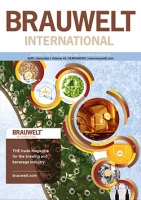Wort preparation geared to reducing DMS can be calculated and predicted. On that basis, the fifth part of this series of articles describes process equipment improvements in the brewhouse resulting in previously unattainable energy reduction for evaporation.
The Jacobsen Brewhouse, Copenhagen, Denmark, was founded in 2005 as one of the nuclei of the craft revolution in Denmark. The Carlsberg-owned brewery relocated its filter cellar in 2016 due to structural changes. The brewery took this opportunity to change the filtration system from kieselguhr to membrane.
Prompted by recent developments in brewhouses, especially mash filtration (see Brauwelt International no. 3, 2017: Novel Mash Filtration Process (Part 1), the importance of iodine normality in beer wort was analysed, assessed and summarised in order to evaluate brewhouse procedures.
In this series of articles about process engineering in brewing, the fundamentals inherent to the discipline are examined using relevant examples for purposes of elucidation. The general principles encountered in process engineering were reviewed in part 1 (BRAUWELT International No. 2, 2017, pp. 127-131), while part 2 explored the discipline of mechanical process engineering (BRAUWELT International No. 3, 2017, pp. 185-188). Part 3 is devoted to thermal process engineering. Here, the focus is on mixing and separating molecules and systems of molecules. An equation of state is an important tool for describing such systems.
Wort preparation is at the heart of beer production, yielding wort for fermentation from water, malt and hops natural raw materials. The fourth part of this series of publications provides an ultimate answer to the issue of the best process for removing DMS from wort.
Pressure or a vacuum may arise in many production processes. Inadmissible pressure or vacuum conditions often lead to serious damage. Loss of production and high financial losses arise and, in the worst case, human life may be endangered. Important factors to be taken into account when safeguarding pressure vessels are described below.
This series of articles introduces and explores selected areas of fundamental knowledge (see BRAUWELT International No. 2, 2017, p. 127) using relevant examples from the field of process engineering applied to brewery production. Mechanical process engineering is focused on mixing and separating particles and particle collectives or conglomerates, while thermal process engineering deals with separating and combining molecules and systems of molecules. This second installment in the series examines the discipline of mechanical process engineering more closely. The next article will be devoted to thermal process engineering and will appear in the upcoming issue of BRAUWELT International.
The third part of this series of articles addresses the question in greater detail of the best process for driving off DMS from wort. Part 2 described that external boiling permits better re-formation than kettle boiling and that, in return, kettle boiling achieves superior evaporation. These processes, having opposite effects, were calculated independently. In this article, the question of which system is superior is examined, when jointly and simultaneously investigating evaporation and hot holding.
Yeast’s impressive natural biodiversity has often been overlooked in modern industrialized brewing in favour of workhorse yeast strains that offer consistency. Today, in an age of rapid expansion in brewing creativity, yeast’s biodiversity is being harnessed to help fuel innovation in beer making.
Many brewers rely on pilot trials to test new recipes for dry-hopped beers. Dry hopping in kegs offers the advantage of developing new brews while using only small quantities of beer and hops. This, in turn, allows brewers unlimited creativity, for example, by providing the opportunity to experiment with different beer styles, numerous hop varieties or merely to vary the contact time – enabling brewers to develop a recipe with the sensory profile they desire. In most cases, this recipe is then brewed on a commercial scale without modification. This article explores the question of whether dry-hopped beers brewed at different scales are indeed comparable, both sensorially and analytically [1].
This article is the first installment in a series of articles summarizing selected fundamental principles and essential elements of process engineering. For purposes of clarity, the field of study will be divided into the disciplines of mechanical and thermal process engineering, and substances and processes commonly encountered in each discipline will be explained with regard to their impact on brewing. The objective is to give the reader insight into the challenges inherent to process engineering in both general applications and in brewing, but also to offer approaches for developing solutions.


